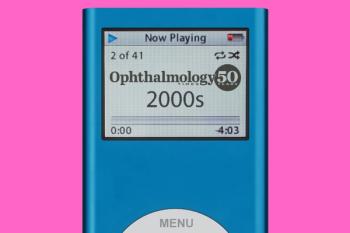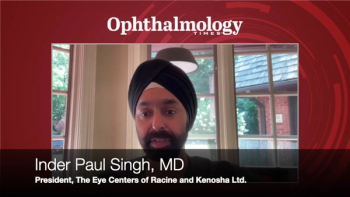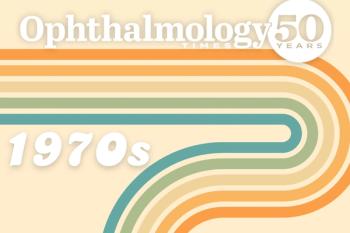
Supplements and Featured Publications
- Glaucoma 360: Highlights from 2021
Survey sheds light on glaucoma prevalence in West Africa
Region may have world’s highest rate, investigators say.
Reviewed by Donald L. Budenz, MD, MPH
The Tema Eye Survey (TES), an international effort carried out by investigators from the United Kingdom, United States, and Ghana, was undertaken because of the recognized scarcity of comprehensive eye disease information from Africa as a whole and no data from West Africa.
Gathering such data can help Ghana’s Ministry of Health plan for future eye care needs in the country and the region to correctly appropriate resources.
Donald L. Budenz, MD, MPH, the Kittner Distinguished Professor and chairman of the Department of Ophthalmology at the University of North Carolina School of Medicine in Chapel Hill, and other investigators hypothesized that this region has the highest glaucoma prevalence in the world.
Glaucoma in Africans
In large population-based studies, such as the Baltimore Eye Survey1 and the Barbados2 and St Lucia3 studies, glaucoma has been shown to pose a triple threat compared with other ethnic groups to individuals of African heritage with an increased prevalence, younger age of onset, and more severe disease course.
Previous studies in East and South Africa4,5 have reported a lower prevalence of primary angle-closure glaucoma (POAG) compared with the North American studies.
Tema Eye Survey
The TES was randomly sampled, was population-based, and, importantly, did not rely on elevated IOP in its case definitions, Budenz said.
Before the TES, only 1 glaucoma survey had been performed in East Africa, 2 in South Africa, and none in West Africa.
The primary goal of the TES was to determine the prevalence rates of blindness, visual disability, glaucoma, and other ocular diseases in adults in Tema, Ghana.
The survey included 5600 randomly sampled adults who were 40 years and older. The survey design required a random sampling of clusters of 400 to 600 individuals of voting age for a total of 30 to 40 clusters.
The investigators had to map the communities because of the absence of census data and used voting rolls to identify potential participants.
The clusters were randomly selected, and field examinations were performed on 5600 participants. Individuals who failed the field examinations then underwent clinic evaluations.
The criteria for a referral for a full dilated clinic examination were visual acuity below 20/40, 2 failures on frequency-doubling technology testing, IOP greater than 20 mm Hg, narrow chamber, and cup-to-disc ratio greater than 0.7.
Glaucoma was defined according to the standard definition developed by Foster and colleagues,6 Budenz said.
Another challenge was that the local staff required training in all instrumentation, including the SITA Fast Humphrey VF Analyzer, because these evaluations had never been performed in this location.
Findings
Budenz reported that a census was done of 6806 individuals, and field examinations were performed on 5607 individuals (response rate, 82.2%).
A total of 1869 failed the field examination, and 1538 underwent clinic examinations (response rate, 82.2%).
The prevalence rate of glaucoma in this population was 6.5%. When the data were adjusted for age and gender, the total POAG prevalence rate increased to 6.8%.
“The glaucoma types identified were primarily POAG in 94.5%, chronic narrow-angle glaucoma in 2.5%, traumatic glaucoma in 1.9%, and others that included uveitic, mixed-mechanism, steroid-induced, and unspecified glaucoma in 1.1%,” he said, noting the absence of pseudoexfoliation glaucoma.7
A comparison of the total prevalence of POAG in this study population with the other studies showed that the prevalence was similar to rates reported from Barbados and St Lucia and almost double those found in East Africa, South Africa, and the US.
“We believe that the study population is very similar to the Caribbean populations in glaucoma prevalence, which is likely due to migration from West Africa to the Caribbean during the slave-trading years and lack of admixture,” Budenz said. “These populations are unique in the high prevalence of glaucoma.”
A noteworthy finding of the current study was that only approximately 3% of the patients identified with glaucoma were aware that they had the disease, which is in marked contrast with similar studies conducted in developed countries in which 50% of patients identified with glaucoma were aware they had the disease.
The prevalence of undiagnosed glaucoma in the TES study was 97%.
TES Phase 2
The extended study’s goal8 was to identify the incidence of glaucoma and the rates of progression among the original patients after 10 years.
Investigators examined 1200 individuals who had tested normal previously using the same methods, and they also tried to reexamine the original 362 individuals in the clinic who had received a diagnosis of glaucoma.
The incidence per 100 individuals of OAG was 4.7 per year. When results
were compared with those of other studies with gender and age adjustment, the incidence rates of OAG in the TES survey and the Barbados Eye Study were “considerably higher.”
The population in Ghana is severely underserved by medical professionals, Budenz said. There are only 53 ophthalmologists to provide care for 27 million individuals; in contrast, there is 1 ophthalmologist for every 10,000 individuals in the US.
The future
“The next steps in this population are to improve case detection of glaucoma through screening, train eye care providers in sub-Saharan Africa
to diagnose and manage glaucoma, and find the best treatments for this population, which include selective laser trabeculoplasty, trabeculectomy with mitomycin C, glaucoma tube implants, and cyclophotocoagulation,” Budenz concluded. “We are not sure how medications fit into this algorithm, in that they are expensive and not sustainable in this population.”
----
--
Donald L. Budenz, MD, MPH
E:[email protected]
This article was adapted from the Shaffer-Hetherington-Hoskins Lecture titled “Glaucoma at the Center of the Earth,” which Budenz delivered at the 25thannual Glaucoma Symposium of the Glaucoma Research Foundation. He has no financial interest in this subject matter. The second phase of TES was supported by a Shaffer Grant from the Glaucoma Research Foundation.
References
1. Tielsch JM, Sommer A, Katz J, Royall RM, Quigley HA, Javitt J. Racial variations in the prevalence of primary open-angle glaucoma. The Baltimore Eye Survey. JAMA. 1991;266(3):369-374.
2. Leske MC, Connell AM, Schachat AP, Hyman L. The Barbados Eye Study. Prevalence of open angle glaucoma. Arch Ophthalmol. 1994;112(6):821-829. doi:10.1001/archopht.1994.01090180121046
3. Mason RP, Kosoko O, Wilson R et al. National survey of the prevalence and risk factors of glaucoma in St. Lucia, West Indies. Part I. Prevalence findings. Ophthalmology. 1989;96(9):1363-1368. doi:10.1016/s0161-6420(89)32708-4
4. Buhrmann RR, Quigley HA, Barron Y, West SK, Oliva MS, Mmbaga BB. Prevalence of glaucoma in a rural East African population. Invest Ophthalmol Vis Sci. 2000;41(1):40-48.
5. Rotchford AP, Kirwan JF, Muller MA, Johnson GJ, Roux P. Temba glaucoma study: a population based cross-sectional survey in urban South Africa. Ophthalmology. 2003;110(2):376-382. doi:10.1016/S0161-6420(02)01568-3
6. Foster PJ, Buhrmann R, Quigley HA, Johnson GJ. The definition and classification of glaucoma in prevalence surveys. Br J Ophthalmol. 2002; 86(2):238-242. doi:10.1136/bjo.86.2.238
7. Budenz DL, Barton K, Whiteside-de Vos J, et al. Prevalence of glaucoma in an urban West African population: the Tema Eye Survey. JAMA Ophthalmol. 2013;131(5):651-658. doi:10.1001/jamaophthalmol.2013.1686
8. Mwanza JC, Tulenko SE, Barton K, et al. Eight-year incidence of open-angle glaucoma in the Tema Eye Survey. Ophthalmology. 2019;126(3):372-380. doi:10.1016/j.ophtha.2018.10.016
Articles in this issue
about 4 years ago
New Horizons Forum: Diagnostic advances in glaucomaabout 4 years ago
Teleglaucoma: Practice survival in the COVID-19 eraNewsletter
Don’t miss out—get Ophthalmology Times updates on the latest clinical advancements and expert interviews, straight to your inbox.






















































.png)


